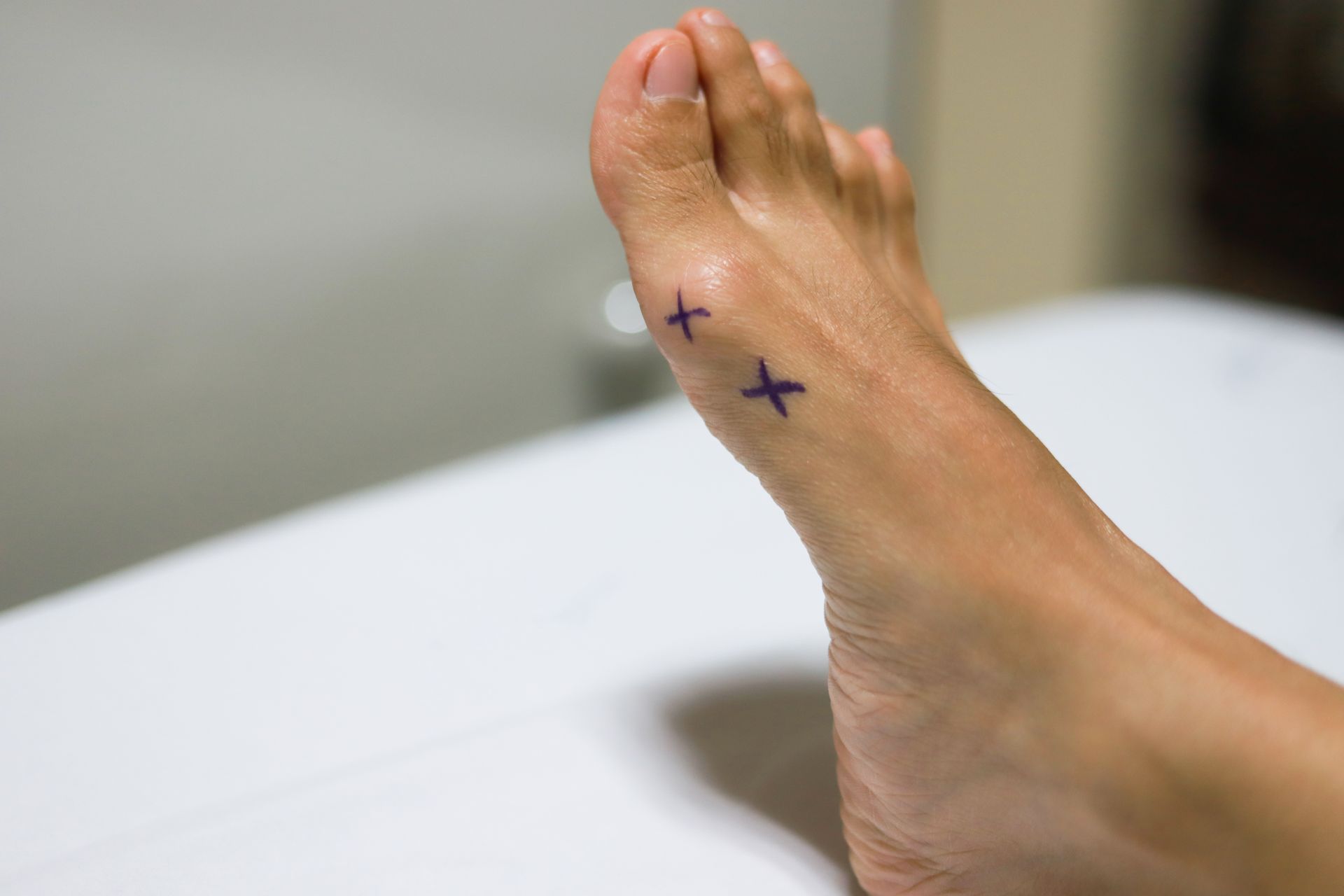Plantar Fasciitis vs Baxter's Neuritis: What's the Difference?
Plantar fasciitis is one of the most common causes of heel pain. It is usually associated with “first-step” pain when getting out of bed in the morning. Plantar fasciitis is a tendinitis along the bottom of the foot, and 85 to 90% of cases resolve with non-surgical treatments. A brief list of treatments includes arch supports and shoe changes, stretches, medications, physical therapy and immobilization in a walking boot. Only 3 to 5% of patients suffering from plantar fasciitis end up progressing to a surgical repair called Endoscopic Plantar Fascia Release .
While plantar fasciitis is quite common, it is not the source of all heel pain. In fact, 15 to 20% of pain on the bottom of the heel is a variation of plantar fasciitis called Baxter’s Neuritis, and it is important to rule out Baxter’s Neuritis, if your heel pain is not improving.
What is Baxter's Neuritis?
Baxter refers to the orthopedist Donald Baxter who is credited with first describing this condition. Neuritis refers to inflammation or entrapment of a small nerve that enters the foot along the bottom of the heel.
What are Symptoms of Baxter's Neuritis?
Unlike plantar fasciitis, patients with Baxter’s neuritis do
not have “first-step” pain when getting out of bed in the morning that eases
with activity. Nor do they have pain when getting up after short intervals of
sitting or rest. With Baxter’s neuritis, the pain in the heel worsens with
activity and builds as the day progresses. Patients with Baxter’s neuritis
often experience numbness along the inside of the heel (medial aspect). This is
because the nerve being entrapped enters the foot behind the inside ankle bone
and dives deep into the foot beneath the muscle that fills the arch (abductor
hallucis muscle). Patients suffering from plantar fasciitis typically have pain
directly beneath the heel bone where the plantar fascia attaches. In the case
of Baxter’s neuritis, the pain on examination is higher on the foot and more to
the inside, rather than the bottom—where the nerve is actually inflamed or
entrapped.
Another common symptom with Baxter’s neuritis is burning
along the outside (lateral aspect) of the foot. This burning occurs because the
irritated nerve courses from the inside of the heel to the outside of the foot.
When the nerve is irritated, symptoms can be experienced along its entire
course. Occasionally, Baxter’s neuritis will even affect a patient’s ability to
splay, or separate, the fourth and fifth toes.
How is Baxter's Neuritis Diagnosed?
A careful history and physical will elicit the differences between classic plantar fasciitis and Baxter’s neuritis as mentioned above. The differences in “first-step” pain, burning along the lateral aspect of the foot, and numbness and pain over the abductor muscle rather than the bottom of the heel will help guide a diagnosis. X-ray images and MRI scan are also helpful. X-rays help rule out bony pathologies that can masquerade as Neuritis or fasciitis. An MRI can be helpful in two ways: First, an MRI can show the absence of thickening or inflammation along the plantar fascia; second, an MRI can show inflammation along the abductor muscle, where the Baxter’s nerve is entrapped or inflamed. In difficult or non-classic cases, it can be hard to distinguish between these two conditions. A selective injection of local anesthetic along the entrapped nerve is very effective. Patient’s obtaining significant relief with a local injection can feel confident about the diagnosis.
What is the Treatment for Baxter's Neuritis?
Non-surgical treatments for Baxter’s Neuritis and plantar
fasciitis are almost identical. A trial of arch supports and shoe changes,
medications, physical therapy and immobilization in a walking boot are all
appropriate measures. Local injection with cortisone is also effective. However, in the case of Baxter’s neuritis,
the area the medicine is infiltrated will vary from plantar fasciitis. The
biggest difference between non-surgical treatments for Baxter’s Neuritis and
plantar fasciitis is that many practitioners find the neuritis responds less
favorably to these measures. In cases of confirmed Baxter’s Neuritis that fail
to respond to conservative options, good results have been shown with a
surgical procedure called External Neurolysis.
If you believe that you are suffering from
plantar fasciitis, understand that this is not the only potential source of
heel pain and that your symptoms may be attributable to another condition
entirely. In order to accurately
diagnose your condition, schedule an appointment
with a foot specialist such as
Dr. Patrick Hall
, and learn which treatment options are best suited for you.


